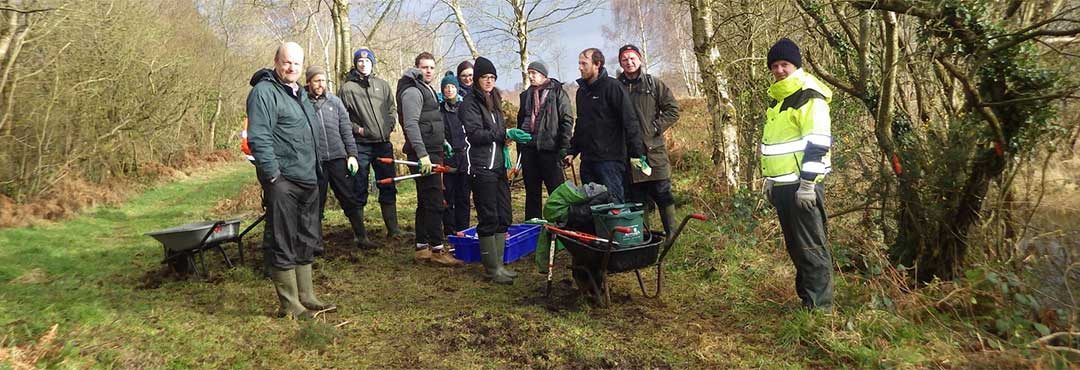Thousands of years ago pristine forests existed all over Europe and shaped the daily life of people in prehistoric times. Oak was the most common tree in these areas.
There are more or less three main species which charcterise an oakwood: The most common is sessile oak Quercus petraea, followed by the pedunculate oak Quercus robur and downy birch Betula pubescens. Within Northern Ireland this type of woodland is found mostly in the north east, on less base-rich soils, in rocky and wet locations. It is estimated that in Northern Ireland there is about 2,350 ha Oakwood.
Oaks can live more than 500 years, with the production of acorns taking up to 80 years.
Historical info about Oakwood
After the last Ice age, more than 12.000 years ago, the climate warmed up and became more suitable for colonisation, with the first oaks starting to germinate around 7000BC.
During the Neolithic, Bronze and Iron Ages trees were used to create tools for tree-felling and agriculture, weapons and manufacture. There is evidence that oak trees were used in Northern Ireland more than 9000 years ago. The trunk was used for coffins, houses, churches, ships, to make coal for iron melting, and the bark was used for tanning leather. Woodlands during this time were carefully managed as they were useful for so many things.
At the beginning of the 1900’s many woodlands fell into disuse as other materials began to take over from wood, and the traditional management which had kept the woodlands healthy ceased.
Species living in and around Oakwood
Oak trees are particularly important for the wildlife and plantlife in woodlands – supporting over 350 different species of insect, (much more than any other tree) as well as an abundance of lower plants such as fungi, ferns, mosses and lichens. On the ground layer flowers like bluebell, wood anemone, primrose and other species are linked to oak woodlands.
Threats to Oakwood
- Grazing, browsing and bark stripping, meaning that the animals eat small trees and shoots and prevent new growth coming through.
- Invasive species – Fuchsia, rhododendron, cherry laurel, Japanese knotweed, snowberry and salmonberry. Also sycamore, which is a harmful invasive species as it grows rapidly and has a dense canopy which cuts down light reaching the forest floor, limiting the growth of other species.
- Clearing of woodland for agriculture.
- Nutrient enrichment caused by spray drift, means of agricultural land besides and game bird rearing changes soils and ground flora and so far the Oakwoods in a later time.
- Lack of traditional management such as coppicing, which kept the trees healthy and provided better habitat for other species.
- Also diseases like Sudden Oak Death (caused by a fungus named Phytophthora ramorum) can affect the woodlands and kill trees.
- Air-pollution and climate change can destroy especially old trees and the constitution of the vegetation communities.

